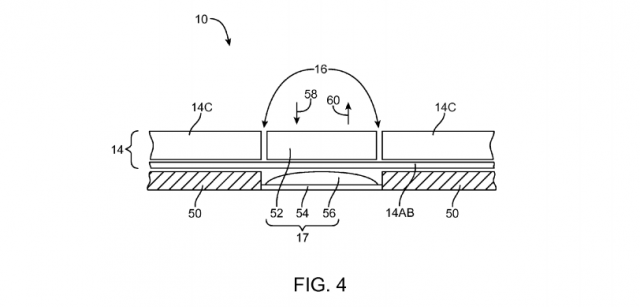Apple’s Patent Application – Touch Implement with Haptic Feedback
A new patent application of Apple submitted to the U.S. Patent and Trademark Office plans an intelligent news stylus which would bring about onscreen textures on devices such as the iPad. The patent application for `Touch implement with haptic feedback for simulating surface texture’ specifies a stylus input device with on-board electronics which tend to enable it to sense contact with a touchscreen, collect information with regards to displayed texture and output vibratory feed related to said texture.The stylus employing haptic technology could also connect to devices through Wi-Fi or Bluetooth. The stylus tends to contain contact sensors, to control when the device touches down on a target surface, while other implementations depend on capacitive sensors, pressure sensors as well as cameras in determining when it touches a target surface like the iPad’s touchscreen.
The sensors like photodiodes could be used to determine textures such as wood, glass, cotton, paper, silk and much more. When a texture is determined, the touch implement tends to activate a haptic feedback mechanism to communicate corresponding vibrations, auditory signals to the user. Feedback profiles could differ based on textures, which means rougher depicted textures could activate more dramatic vibrations while surfaces such as glass could raise little to no feedback.
Granular Experience – Feedback Profiles Changes Dramatically
Apple has recommended an equally granular experience wherein the feedback profiles could change dramatically as a stylus moves over varied portions on the surface of the screen. For instance, user would observe differing levels of feedback as they wrote on a scene showing wood, glass and parchment.Moreover, the system is capable of adjusting haptic output created as it senses changes while writing pressure, angle or orientation. Patent application of Apple was first filed for, in January 2014, for a stylus with haptic feedback and credits go to Jason Lor, Patrick A. Carroll and Dustin J. Verhoeve as its inventors. The company’s texture-reading patent application quotes the same inventors together with Glen A. Rhodes.
In a related patent which was also published recently, Apple summaries a stylus input which works in the reverse to the method mentioned earlier, wherein instead of simulating sensed texture via vibratory feedback, it uses a camera module in its tip to interpret and record physical characteristic of virtually any object or surface, reproducing those properties that is visually on a computing device.
Apple to Debut Branded Stylus
In some embodiments the light tends to bounce off an object and passes through the clear tip or lens gathered by an embedded photo sensor and the image data is passed to a connected device to be processed in order to reproduce a three dimensional versions.This includes image textures, colours and shape. Besides the exact object reproduction, the system is ideal in capturing textures as well as mapping them to graphical tool for illustration, photo editing or CAD software. Reports have indicated that Apple is gearing to debut a branded stylus when it reveals a larger 12.9 inch iPad model which is expected to be launched sometime this year.
Ming-Chi Kuo noted KGI analyst is of the belief that the initial release would be a simple model without communication potentials or on-board sensors with much advanced structures coming up in the succeeding generations.















